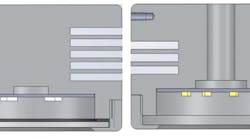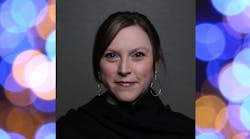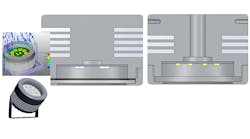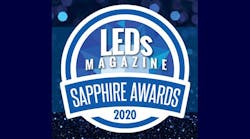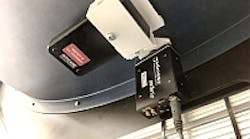Comparing with traditional fluorescent lamps, LED tubes have high light output, low power consumption, long life time, and stable luminous efficiency advantages, etc. At the same time, the LED tube performance testing is becoming simpler in recent years as more and more customers have chosen the LED tubes to replace fluorescent lamps.
The IEC62776 standard from chapter 1 to chapter 3.2 mention that LED tubes can replace the double-capped fluorescent lamps and how to transition from G5 and G13 lamp holder fluorescent lamp to LED tubes. This kind of equivalent replacement needn't change the design of LED tubes. At the same time, this standard also mentions the IEC60081 double-capped fluorescent lamp performance test and LED tubes suitable to replace fluorescent lamps with integrated magnetic ballasts. So how do we perform equivalency tests between LED tubes and fluorescent lamps, especially when there will be a high frequency power supply and high frequency adjustable reference ballast? As we know the fluorescent lamp consists of a fluorescent capillary, electrical ballast, and fixture. The testing process is to connect the RB-3 with double-capped lamps using this fluorescent capillary; also we need to connect HFP-800's high frequency power supply with double-capped fluorescent capillary; some fluorescent capillaries require a preheating process according to the IEC standard's requirement. At the same time, the relevant parameters need to be set up according to the IEC standard’s requirement.
The RB-3 is applied with no sense of resistance ballast which is specially designed for select reference light (fluorescent capillary); the characteristics of the reference ballast include constant voltage and current ratio based on rated frequency, and it cannot be affected by voltage, temperature or ambient changes.
The HFP-800 provides a high frequency reference ballast with high frequency power supply. The HFP-800+RB-3 system not only can perform T5/T8 fluorescent lamp tests but also can do LED tube equivalent testing.
For the equivalent test between fluorescent lamps and LED tubes, you take away the fluorescent capillary and connect the LED tube (included driver) with EB, so it's necessary to explain the working principle of EB and driver: the EB is an AC to AC model. When turning on the fluorescent lamp, there is an AC model high voltage to electric shock fluorescent capillary for lighting the lamp, then the EB will output constant AC voltage to maintain the fluorescent lamp illumination. The LED driver is an AC to DC model; there is DC power to light a single LED or LED luminaires. So in this case use an LED tube (included driver) connected with EB, which also connects an AC to AC model. The equivalency tests have three purposes: One is lighting an LED tube; second is see whether the power consumption of the LED tube is lower than the fluorescent lamp or not; third is determining whether the light effect of the LED tube is higher than the fluorescent lamp (this will be judged by spectrometer & integrating sphere system). The best fair way to assess with these three purposes in mind is to recognized that the EB is important;, we can't use just any EB to do this kind of equivalency test, it must be mentioned or recommended by IEC or other standards. To solve this issue, Shanghai Lisun Electronic office developed HFP-800 High Frequency Power Supply and RB-3 High Frequency Adjustable Reference Ballast; both devices fully meet IEC60081 IEC60901 and ANSI C78.81 & C82.11 standards.
Contact:
Mr. Sam Gan - Lisun Group+86-(21)-5108-3341 ext. 8002
Web site:
www.lisungroup.comLocate more test & measurement equipment vendors in the LEDs Magazine Suppliers Directory
Submit new products, case studies/projects, and other press releases at http://www.ledsmagazine.com/content/leds/en/addcontent.html.
More from Lisun:
Lisun develops new LED lighting test system for surge measurement
Lisun develops LED test tools for lumen maintenance evaluation
